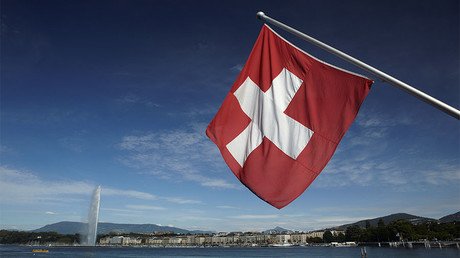Why Saudi Arabia will lose the next oil price war
The latest oil price war has done tremendous damage to the Saudi economy, and has significantly deteriorated the kingdom’s relationship with the US.
Saudi Arabia has instigated two oil price wars in the last decade and has lost both. Given its apparent inability to learn from its mistakes it may well instigate another one but it will lose that as well. In the process, it has created a political and economic strait-jacket for itself in which the only outcome is its eventual effective bankruptcy. OilPrice.com outlines why this is so below.
The principal target for Saudi Arabia in both of its recent oil price wars has been the US shale industry. In the first oil price war from 2014 to 2016, the Saudi’s objective was to halt the development of the US shale sector by pushing oil prices so low through overproduction that so many of its companies went bankrupt that the sector no longer posed a threat to the then-Saudi dominance of the global oil markets. In the second oil price war which only just ended, the main Saudi objective was exactly the same, with the added target of stopping US shale producers from scooping up the oil supply contracts that were being unfilled by Saudi Arabia as the kingdom complied with the oil production cuts mandated by various OPEC and OPEC+ output cut agreements.
Also on rt.com Saudi reserves plunge as kingdom struggles with Covid-19 pandemic & oil-market routIn the run-up to the first oil price war, the Saudis can be forgiven for thinking that they stood a chance of destroying the then-relatively nascent US shale sector. It was widely assumed that the breakeven price across the US shale sector was $70 per barrel and that this figure was largely inflexible. Saudi Arabia also held record high foreign assets reserves of $737 billion at the time of launching the first oil war. This allowed it room for manoeuvre in sustaining its economically crucial SAR-US$-currency peg and in covering any budget deficits that would be caused by the oil price fall. At a private meeting in October 2014 in New York between Saudi officials and other senior figures in the global oil industry, the Saudis were ‘extremely confident’ of securing a victory ‘within a matter of months’, a New York-based banker with close knowledge of the meeting told OilPrice.com. This, the Saudis thought, would not only permanently disable the US shale industry, but would also impose some supply discipline on other OPEC members.
As it transpired, of course, the Saudis had disastrously misjudged the ability of the US shale sector to reshape itself into a much meaner, leaner, and lower-cost flexible industry. Many of the better operations in the core areas of the Permian and Bakken, in particular, were able to breakeven at price points above $30 per barrel and to make decent profits at points above $37 per barrel area, driven in large part through advances in technology and operational agility. After two years of attrition, the Saudis caved in, having moved from a budget surplus to a then-record high deficit in late 2015 of $98 billion. It had also spent at least $250 billion of its precious foreign exchange reserves over that period that were lost forever. In an unprecedented move for a serving senior Saudi politician, the country’s deputy economic minister, Mohamed Al Tuwaijri, stated unequivocally in 2016 that: “If we [Saudi Arabia] don’t take any reform measures, …then we’re doomed to bankruptcy in three to four years.”
The even more enduring legacy of this first oil price war, though – and part of the reason why the Saudis could never hope to win the last one, or any future oil price war either – is that it created the resilience of the US shale sector as it now stands. This means that the US shale sector as a whole can cope with extremely low oil prices for a lot longer than it takes Saudi Arabia to be bankrupted by them. Saudi Arabia has much greater fixed costs attached to its oil sector, regardless of how low market prices go. Before the onset of the latest oil price war, the Kingdom had an official budget breakeven price of $84 per barrel of Brent but, given the economic damage done by this latest price war folly, it is much higher now. By stark contrast, the US shale sector that Saudi crucially helped to shape in the first oil price war is now so nimble that $25-30 per barrel of WTI is enough to bring some of the production back on line, as long as operators believe that prices will not fall and hold below the $20 per barrel level. But, even if prices are below that key $25-30 per barrel level, it does not matter to the long-term survivability of the US shale sector as the key players are able to shut down wells instantly as and when needed and to start up them up again within a week as demand requires. In sum: in any oil price war, the Saudis simply cannot wait out the US shale sector.
On the other hand, though – in a rising oil price environment - the Saudis are also doomed. This is because the US – even before the latest oil price war – had intimated that it would not tolerate oil prices above around $70 per barrel of Brent. When the oil price rose last year during the March-October period consistently above $70 per barrel level, US President Donald Trump Tweeted about Saudi Arabia’s King Salman that: “He would not last in power for two weeks without the backing of the US military.” The $70 per barrel level is considered one that brings into view oil price levels that might pose problems for the US economy. Specifically, it is estimated that every $10 per barrel change in the price of crude oil results in a 25-30 cent change in the price of a gallon of gasoline, and for every 1 cent that the average price per gallon of gasoline rises, more than $1 billion per year in consumer spending is lost.
Before this latest Saudi-instigated oil price war, the US had little interest in the fact that this $70 per barrel level was way below Saudi Arabia’s then-budget breakeven oil price. After this latest attack on its strategically vital shale sector, the US has absolutely no interest whatsoever in this budget breakeven fact or indeed in whether Saudi Arabia continues to slowly haemorrhage into bankruptcy in the coming years, according to a number of Washington-based sources close to the US Presidential Administration spoken to by OilPrice.com in the last few weeks. Partly this indifference is due to the perceived ‘betrayal’ of the foundation stone deal that had determined the two countries relationship since 1945. This was that the US would receive all of the oil supplies it needed for as long as Saudi Arabia had oil in place, in return for which the US would guarantee the security of the ruling House of Saud. This altered slightly with the advent of the US shale sector to ensure that Saudi Arabia also allows the US shale industry to continue to function and grow.
Also on rt.com EIA predicts a record drop in US shale oil productionPartly as well, this indifference is due to the series of other blunders that senior US politicians believe have been made by Saudi Crown Prince Mohammed bin Salman (MbS), which now make him a liability. This includes – but is not limited to – the Saudi-led war in Yemen, the cosying up of Saudi to Russia in the OPEC+ grouping, Lebanese President Michel Aoun’s allegation in 2017 that then-Prime Minister Saad al Hariri had been kidnapped by the Saudis and forced to resign, and the murder of dissident Saudi journalist, Jamal Khashoggi, which even the CIA concluded was personally ordered by MbS.
These factors culminated in President Trump making his earlier Tweeted implied threat about the fragile hold that the al-Sauds have on power in Saudi Arabia without US assistance into a guaranteed promise during a telephone conversation on 2 April with MbS. During this call, Trump reportedly told MbS that unless OPEC started cutting oil production (with the implication being to push up prices to levels where the US shale producers could start making decent profits) then he would be powerless to stop lawmakers from passing legislation to withdraw US troops from Saudi Arabia. Shortly thereafter, MbS did what he was told. The change in this rhetoric from implied threat to guaranteed action means that this is now in the fabric of all future US dealings with Saudi Arabia and it brings the Saudis crashing back to the basic problem. That is: economically it cannot afford to continue to crush oil prices for long enough to cause sustained damage to the US shale sector, politically it is not permitted to allow prices to rise high enough to avoid eventual effective bankruptcy, and any pricing in between just allows the US shale sector to make greater profits and grow even more. In this regard, the OPEC+ production cuts are perhaps the cruellest cut of all for the Saudis: the Saudis have to implement them and abide by them because they are needed to keep oil prices high enough to ensure the profitability and growth of the US shale sector but the cuts cannot continue for long enough to allow the Saudis back into an ongoing budget surplus.
Already in this context, March saw Saudi Arabia’s central bank depleted its net foreign assets at the fastest rate since at least 2000, falling by just over SAR100 billion ($27 billion). This is a full five percent decrease from just the previous month, and the total reserves figure now stands at just $464 billion, the lowest level since 2011. It leaves only $164 billion of ‘fighting reserves’ that can be used on everything else that Saudi needs when the $300 billion that is estimated to be needed to keep the economic cornerstone SAR/US$-peg is subtracted. At the same time, the kingdom slipped into a $9 billion+ budget deficit in the first quarter and a number of independent analysts are predicting that its overall gross domestic product could shrink by more than three percent this year (the first outright contraction since 2017 and the biggest since 1999), whilst the budget deficit could widen to 15 percent of economic output.
By Simon Watkins for Oilprice.com














